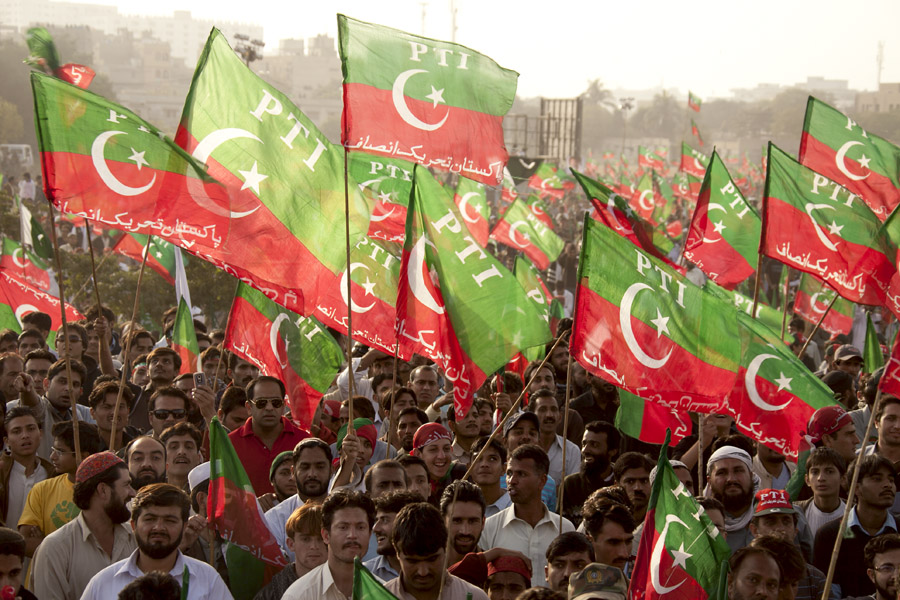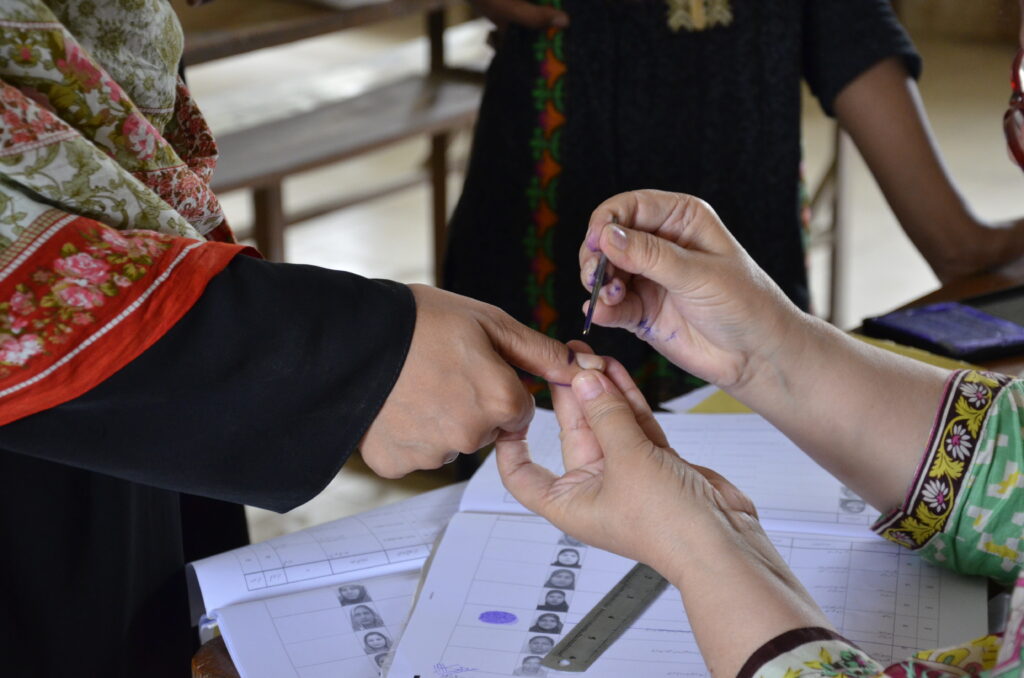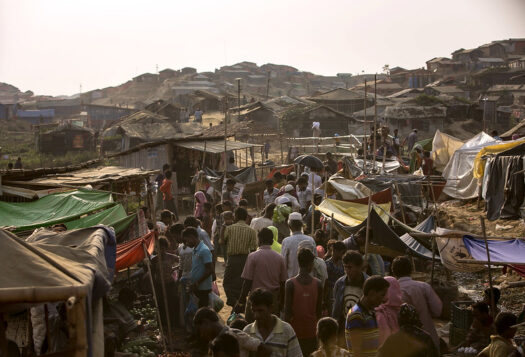
Pakistan held general elections on February 8, almost two years after Prime Minister Imran Khan of Pakistan Tehreek-i-Insaf (PTI) was ousted in a no-confidence vote. Since then, PTI politicians and supporters have experienced a crackdown from police and the military establishment. Courts also banned Khan from running, and PTI’s bat symbol was removed from ballots. Pakistanis, however, came out and voted in significant numbers for independent candidates, most of whom were previously affiliated with the PTI. For the first time in Pakistan’s history, independents won the most seats in Parliament, even as the final tally remains disputed. Experts Niloufer Siddiqui, Sarah Khan, Haleema Saadia, and Michael Kugelman react to the surprising results and offer their insights on voter turnout, the electoral process, and the future governance of Pakistan.
*Please check back as we continue to add expert reactions throughout the week.
Democratic Hope and the Limits of the PTI
“The Pakistan Tehreek-e-Insaaf’s performance in the face of a concentrated campaign to disadvantage it marks a critical moment in Pakistan’s history. It points towards 1) limits to electoral engineering by the military, 2) the weakness of many existing political parties, and 3) the rise of a determined, politicized citizenry eager to have its voice heard. In some ways, this is a step forward in Pakistan’s quest for democratic consolidation. Political parties such as the Pakistan Muslim League-Nawaz (PML-N) must reflect on this experience, including their choices in leadership, if they want to remain electorally competitive in the years to come.
At the same time, there is much reason to be cautious. Initial reports suggest that poll-day rigging—the extent of which remains a point of contention—is going to further cast a shadow over the election, and the most likely scenario is a recreation of the tenuous PDM coalition government seen last year. The PTI will not accept this easily, and we should expect to see many protests and rallies over the coming weeks and months. Importantly, we should also be wary of pinning our democratic hopes on the PTI, which has thus far shown an unwillingness to compromise with other political parties—the only way to solidify civilian control in the medium to long-term. Given the nature of the PTI’s organizational structure and its electoral candidates—many of whom are the same dynastic, landed electables the PTI purports to stand against—the party is unlikely to be the revolutionary actor many of its loyal supporters presume it to be.”
– Niloufer Siddiqui, Assistant Professor, Department of Political Science, University of Albany

Analyzing Voter Turnout and Female Participation
“The results of the recent elections in Pakistan have defied expectations across the board. While the “final” result is still contested, and the PML-N and PTI are simultaneously claiming victory, most can agree that Pakistani voters have emerged as the protagonists of this story. With the leader of the PTI, former prime minister Imran Khan being imprisoned, his party supporters and workers targeted with repression, and a narrative of the results being a “foregone conclusion”, we would expect voters to be too intimidated or apathetic to turn out in large numbers. Indeed, in late 2023, a mere 25 percent of surveyed Pakistanis reported confidence in the honesty of elections in their country. And yet, overall voter turnout on February 8th was nearly 48 percent, down from 51 percent in 2018, but certainly not the massive drop one might expect in these circumstances. Although the number of women registered to vote increased since 2018, what has remained stable is a sizable gender gap in voter turnout with women’s turnout at 43 percent and men’s turnout at 52 percent. This is unsurprising, because no political party has made a concerted effort at actively mobilizing women voters.
What comes next? Going into this election, Pakistan was facing a deep economic and political crisis. Some modicum of stability is the bare minimum needed to address what are existential issues for the country, including but not limited to growing political discontent in Balochistan and Gilgit Baltistan and back-breaking inflation. Unfortunately, such stability is not on the immediate horizon. As election results in several constituencies remain contested, we will continue to see legal challenges by candidates, alongside popular protests by voters in the coming days and weeks.”
– Sarah Khan, Assistant Professor, Department of Political Science, Yale University
Observations of Election Day from the Ground
“Pakistanis are currently living through their longest period of democratic governance, spanning 15.5 years since the last Martial Law. In this time, a generation of young voters has matured without experiencing the oppression of dictatorial rule. Pakistan’s 2024 Elections were therefore a deciding battle between the traditional politics represented by the military-landowning oligarchy-feudal dynastic troika and the progressive ideology represented by youth-driven activism, women’s empowerment, human security goals, and middle-class political participation.
On the day of the election, nervous energy pulsed through the air. Polling stations were packed with voters who had started queuing well before polling was supposed to begin. While the flags of other political parties were displayed on their camps near the polling stations, PTI flags and camps were conspicuously absent in several places. At my polling station, no one said explicitly that they were voting for PTI, but the discussions revealed the political leanings of voters in that polling station. Some voters had voter parchis (voter registration details and census-related data about the voter) made in the Jamat-i-Islami camp, even though they were voting for PTI. This showed an apprehension in people that if they showed their true party preferences, they would be stopped from voting. Despite this, the results of the elections showed that the Pakistani voter understands that the solution to the country’s myriad challenges lies in a civilian federal government fortified by strong provincial administrations.
While disparate political factions may seek common cause against PTI, their diverse interests and aspirations will remain unaligned, posing a fundamental obstacle to cohesive governance. A potential PDM 2.0 rule will not have the legitimacy of governance through public mandate and will not be able to sustain for long. Pakistan has a predominantly young population that will decide the public mandate for the next several elections. Ignoring their voice, disregarding their political choices by rigging, and denying them the right to choose their political leadership will breed disillusionment and increase their resentment with the electoral process. Until the people’s voice is respected and their mandate honored, lasting political stability in Pakistan will remain elusive.”
The Future of Governance in Pakistan
“Last week, Pakistan was rocked by the shock of PTI-sponsored independents getting more votes than any other individual party. But ironically, we’re moving toward the very outcome that most observers had expected all along: we will likely see the emergence of a coalition led by the Pakistan Muslim League-Nawaz (PML-N) and the Pakistan Peoples Party (PPP), which received the second and third most seats, respectively. With the large share of seats they gained collectively and the backing they enjoy from the military—which is keen to support parties that can counter PTI—they shouldn’t have to work too hard to find a few smaller parties to fill out the coalition. The biggest challenge for PML-N and PPP may be working out possible disagreements among themselves, given that the two parties are bitter rivals despite having partnered in the past, including in the ruling coalition that served out the rest of Imran Khan’s term following his ouster in a parliamentary no-confidence vote in 2022.
Despite winning the most seats, PTI‘s prospects of forming a coalition are dim. Since its candidates had to run as independents, some of the winners—due to pressure from the military and other factors—will likely align with different parties. Also, in another irony, while PTI enjoys great public support, it is radioactive politically, in the sense that few other parties would be willing to join it in a coalition, because they would fear pressure or retaliation from the military (the PTI, which has long taken a confrontational political stance, may itself not want to partner with other parties). PTI will hope that the court challenges that it will initiate will reverse the results in districts that it claims were rigged. But that may not be enough. At any rate, there’s a good chance that while that legal process plays out, the PML-N and PPP will have formed their coalition. PTI appears poised to return to the opposition.”
– Michael Kugelman, Director, South Asia Institute, Wilson Center
Also Read: Fractured Democracy: Pakistan’s Troubled Election Process
***
Click here to read this article in Urdu.
Image 1: PTI followers via Mustafa Mohsin, Flickr
Image 2: Pakistan 2018 Elections via Commonwealth Secretariat, Flickr


